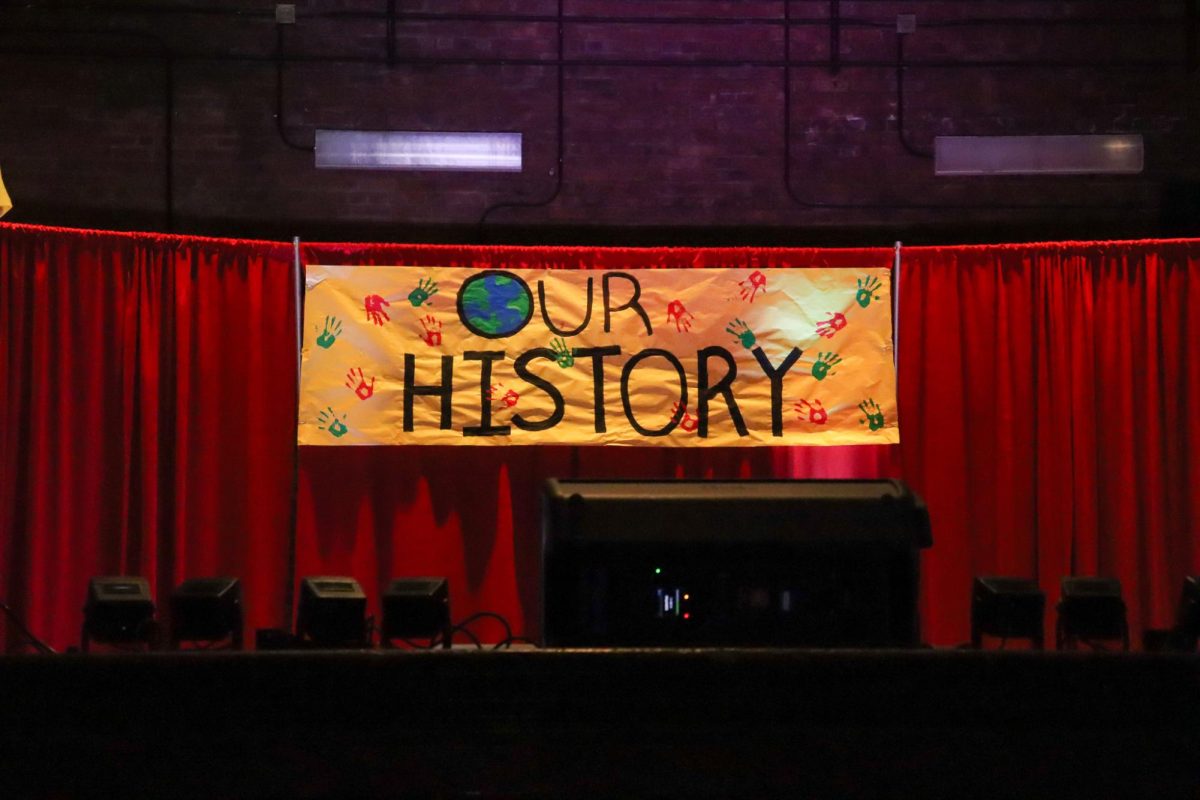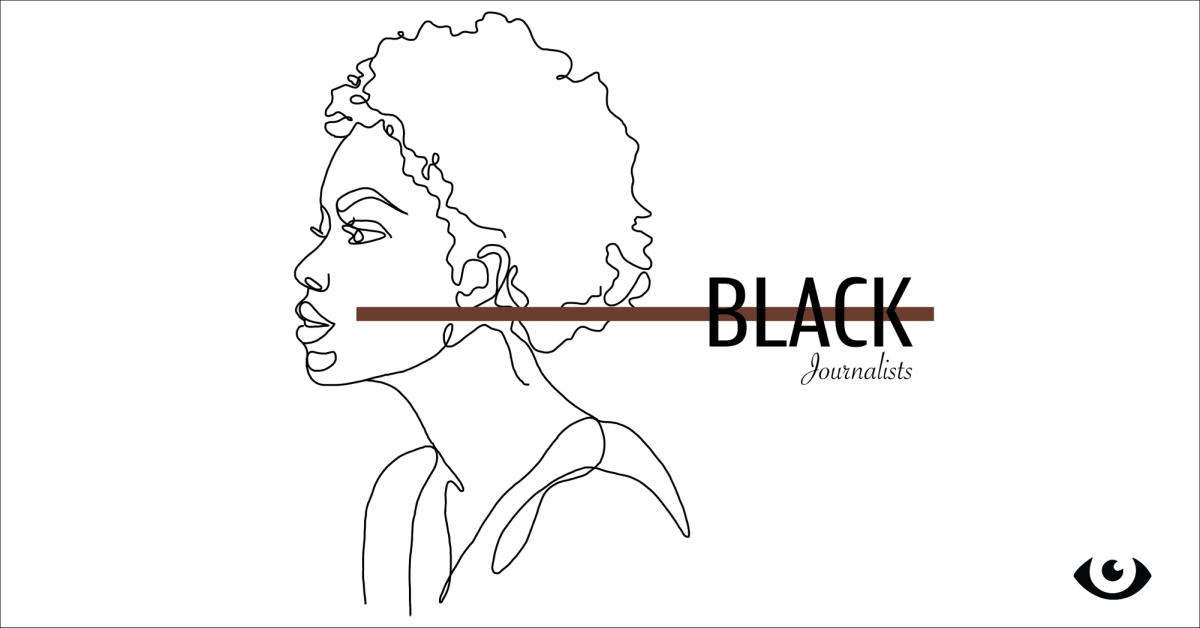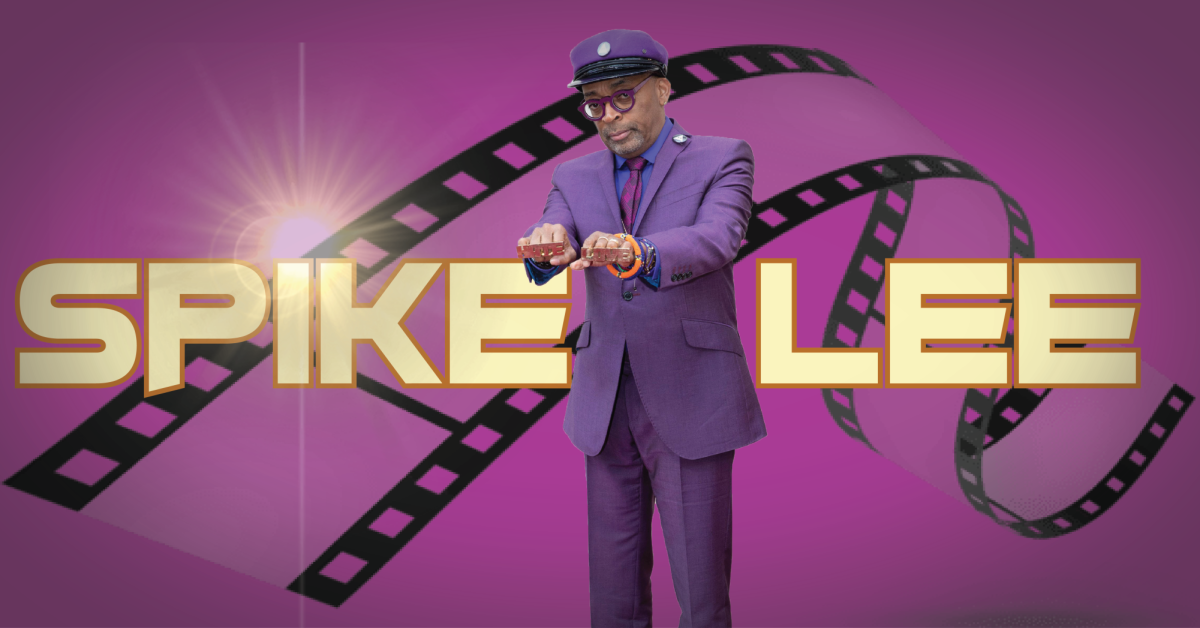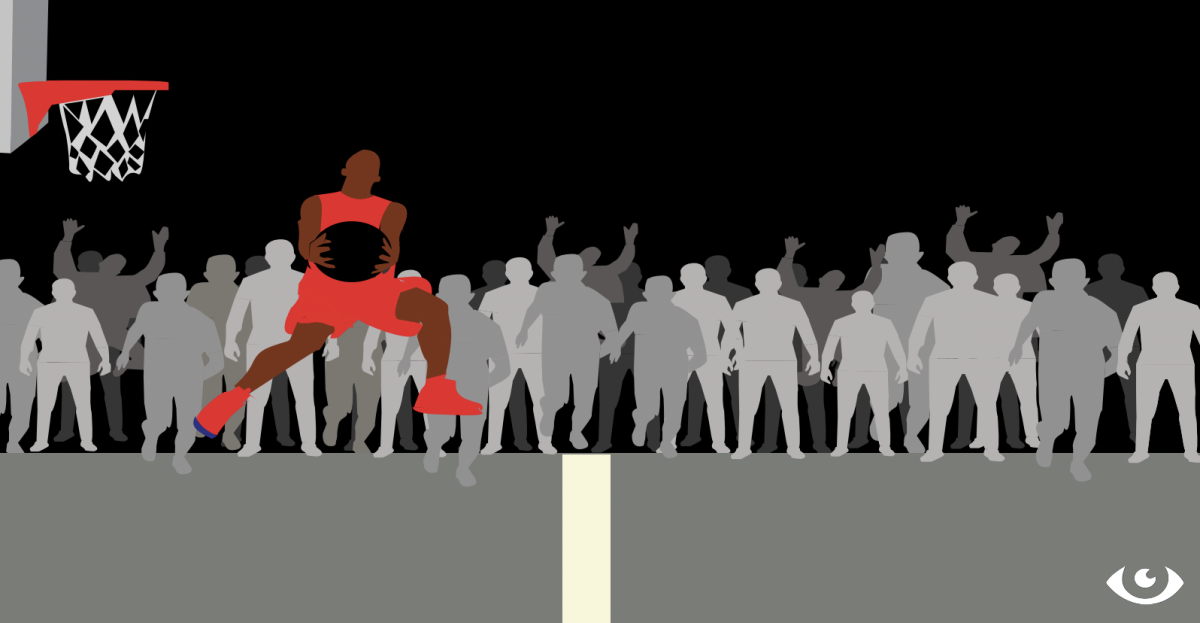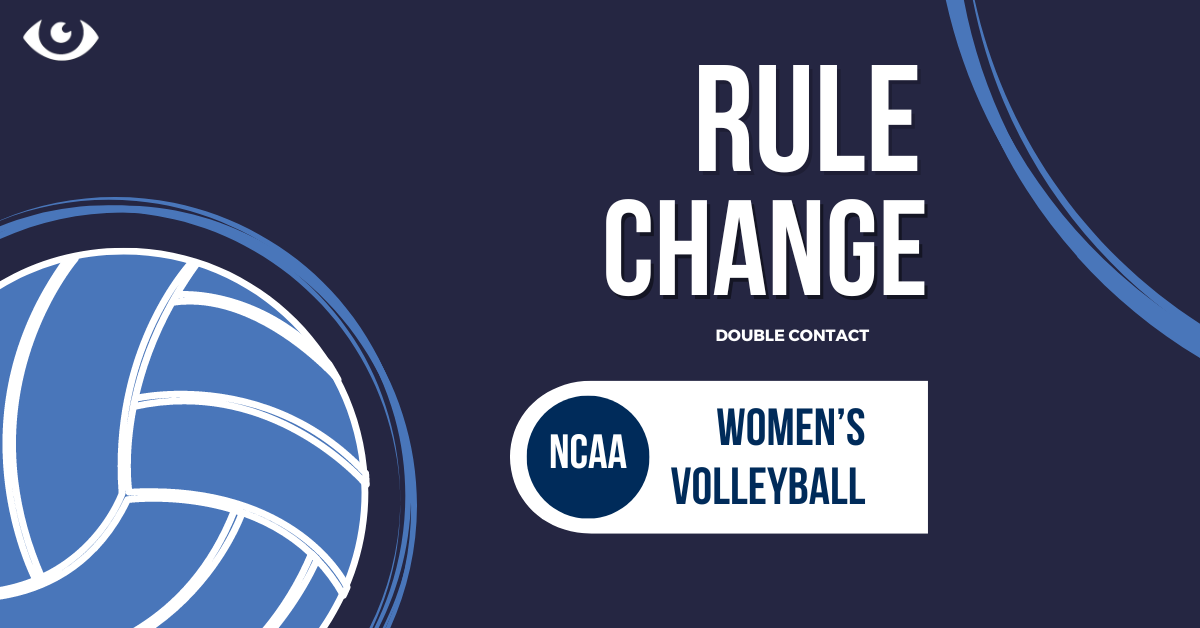Professional athletes are some of the most recognizable people in America. They captivate us with their electric play on the gridiron, the court and the field. Although it is an athlete’s job to perform to the best of their abilities each and every day, they also have a tremendous amount of responsibility and power.
Athletes are some of the most common role models and idols for youth across the entire world. As a child my role model was New England Patriots Quarterback Tom Brady. I did more than just watch him carve up defenses every Sunday, I studied his story—how a kid from San Mateo, California, ended up playing college football at the University of Michigan and then was drafted in the 6th round (199th overall) to a team that had never won a Super Bowl, and turned that team into one of the most dominant dynasties the sports world has ever seen.
The point is that people imitate and listen to their idols. It’s simple branding; if I see one of my favorite player’s name plastered next to a product, I’m more likely to buy that product. An athlete’s voice is one of the most powerful tools in the world. For decades sports figures have used their faces to endorse brands; Nike’s “Bo Knows” campaign starring multi-sport athlete Bo Jackson, Gatorade’s “Be Like Mike” commercial and Sprite’s commercials featuring LeBron James have all helped gain publicity for their products.
Throughout history, athletes have used their power to advocate for social causes. The most famous of these causes is the civil rights movement. Arthur Ashe, Jesse Owens, Jim Brown, Muhammad Ali and Kareem Abdul-Jabbar are just a few examples of professional athletes helping to advance the civil rights movement.
The “Ali Summit,” held almost 51 years ago in Cleveland, Ohio, showed just how powerful athletes are when they come together in support of a common cause. Brown, Abdul-Jabbar (then known as Lew Alcindor), Bill Russell and many other prominent African American athletes of the 1960s met with former heavyweight champion of the world and humanitarian Muhammad Ali to discuss Ali’s decision to refuse being drafted into the Vietnam War. Whether they realized it or not, they were serving as a rallying cry for the civil rights movement.
Fast forward to today and we see these examples in nearly every American sport. In response to the senseless killing of African Americans, both by police officers and citizens, athletes have begun to speak out. As expected, they have been met with a tremendous amount of resistance from the American public and team owners. Rather than stop the protests, the resistance has ignited to help propel the movement forward.
The overwhelming majority of protest resistance is evident in the National Football League (NFL). In the 2016 NFL preseason, former San Francisco 49ers quarterback Colin Kaepernick sat during the national anthem. His actions immediately sparked a national uproar. Kaepernick later changed his protest to kneeling during the pregame national anthem, but his message stayed the same.
“I am not going to stand up to show pride in a flag for a country that oppresses black people and people of color,” Kaepernick said in a 2016 interview with NFL.com.
Although Kaepernick’s protests were met with large amounts of scrutiny, there was also a small group of other athletes who decided to kneel with him as they all took a stand.
Still protesting.#49ers Colin Kaepernick and Eric Reid kneel during the national anthem. (Getty)
WEEKS BEST ? : https://t.co/gDE1R5rAR8 pic.twitter.com/tEk6LlbtsX— SN Graphics (@sportsphotos) September 23, 2016
“Athletes and celebrities have the image of perfect, rich lives. When athletes tell their fan base (which is usually mostly white) that racial injustice even impacts them, it sends a powerful message,” Quintez Brown (12, HSU) said.
Dozens of players across the league knelt during the the national anthem for the entirety of the 2016 NFL season. Despite being blamed for the NFL’s falling ratings, a handful of players continued to sit, kneel or raise a fist during the national anthem.
Fast forward to the 2017 season and the effects of their protests become more evident. More and more players showed solidarity with their teammates and the Black Lives Matter (BLM) movement by locking arms or putting a hand on their shoulder pads.
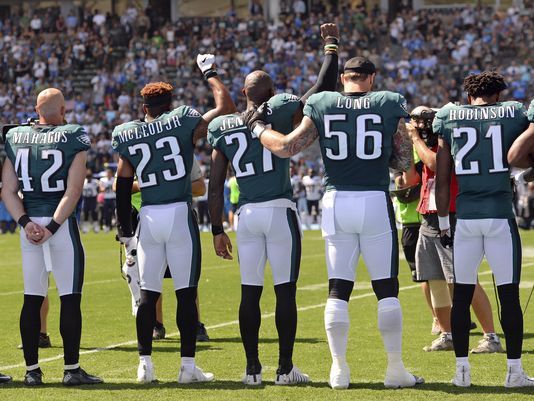
There is still a lot of work to be done in the #BLM movement, but Colin Kaepernick is largely responsible for the progress made thus far.
The Women’s National Basketball Association (WNBA) Minnesota Lynx used t-shirts to spread their message in response to the killings of Philando Castile and Alton Sterling. On July 9, 2016 the team warmed up in black shirts that read, “Change starts with us. Justice and accountability” on the front and the names of Castile and Sterling on the back followed by “Black Lives Matter.”
Players for WNBA’s Lynx wore these shirts and the cops working security walked off the job in protest pic.twitter.com/6zYj1arJcq
— Judd Legum (@JuddLegum) July 12, 2016
“Being a WNBA team and doing this is even better because women have always been seen as lesser (just like African-Americans). Just like the #BLM movement, women struggle with being treated fairly,” Jaela Johnson (12, HSU) said.
The aforementioned protests had all been of the silent variety. They were effective ways of making their voices heard without actually saying anything. At the 2016 ESPY awards, ESPN’s annual awards show, NBA players Carmelo Anthony, Chris Paul, Dwayne Wade and LeBron James took the stage to speak out against police brutality and the retaliation that follows.
“The racial profiling, has to stop. The shoot-to-kill mentality, has to stop. Not seeing the value of black and brown bodies, has to stop. But also the retaliation, has to stop,” Wade said.
“You wouldn’t think about LeBron facing racism because you’re more focused on his game, not his race. So when LeBron gets up on the stage and talks about it, it makes you listen and think ‘Wow, really? This is actually a problem,’ especially if he’s a big influence on you,” Brown said.
This call to action was a huge step for the #BLM movement. This speech came just days after the Lynx wore their #BLM warmup shirts. Seeing a WNBA team and hearing four of the NBA’s most recognizable players call their fellow athletes to advocate for change was monumental. In all likelihood this is what encouraged Kaepernick to sit/kneel during the national anthem.
These actions created a snowball effect. Athletes across nearly every major American sport have made their voices heard. The protests even crossed into baseball last season when Oakland A’s catcher Bruce Maxwell dropped to a knee during the national anthem before a game against the Texas Rangers.
Maxwell’s protest in the MLB was significant because of the difference in demographics between the MLB and other major american sports league. According the 2017 Racial and Gender Report Card for Major League Baseball (MLB), 7.73 percent of players on 25-man MLB rosters are of African dissent. Compared to the the NFL (68 percent African-American), the NBA (74.4% percent African-American) and the WNBA (68.5 percent African-American), Maxwell is a minority in a league dominated by white players.
Nowadays the #BLM movement is stronger than ever. Just as athletes endorsing a brand leads to people buying the product, athletes endorsing a cause leads to more followers.
The protests have even spread to the collegiate and high school levels. High school kids kneel during the anthem knowing they’ll be met with scrutiny from administrators, coaches and parents.
Oak Park & River Forest High School football players, band members kneel during anthem before Friday night’s game | https://t.co/VkunPcjNmN
— Steve Schering (@SteveSchering) September 30, 2017
The movement has hit close to home with Manual students as well. Cheerleaders and spectators have knelt, raised fists or sat down during the national anthem before sporting events in the 2017-2018 school year.
The #BLM movement is moving full-speed ahead, partially due to a handful of professional athletes using their powerful voices to affect change.


